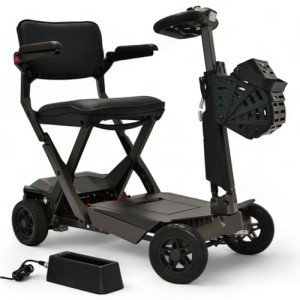Mobility Scooters: A Comprehensive Guide
Mobility scooters have become a vital mode of transportation for many individuals dealing with mobility obstacles. This post explores the different aspects of mobility scooters, including their types, benefits, functions, and a guide for prospective purchasers.
Comprehending Mobility Scooters
Mobility scooters are electrically powered gadgets created for individuals with restricted mobility. They offer a way of transportation for individuals who might have trouble strolling but still desire to maintain their self-reliance. They come in numerous styles and functions to deal with a large range of needs.
Kinds Of Mobility Scooters
Mobility scooters can usually be classified into three main types:
| Type | Description | Best For |
|---|---|---|
| Compact Scooters | These are small and lightweight, perfect for indoors and short journeys. | Users with minimal storage area or those who take a trip typically. |
| Mid-size Scooters | A balance between portability and stability, appropriate for both indoor and outdoor use. | Those who need to cover a range of terrains. |
| Heavy-duty Scooters | Large and robust, developed for rugged outdoor use and much heavier people. | Users needing extra weight capacity or going off-road. |
Key Features of Mobility Scooters
The option of mobility scooter often depends on the functions that line up with private needs. Here are some of the essential features to think about:
- Weight Capacity: Mobility scooters feature various weight limits. It is essential to choose a scooter that can adequately support the user's weight.
- Range: The distance a scooter can travel on a single charge differs. Depending upon user requirements, one may go with scooters with a variety of up to 40 miles.
- Speed: Most mobility scooters can reach speeds in between 4 to 8 miles per hour. Consider what speed is comfortable and safe for the desired environment.
- Turning Radius: A compact turning radius is important for indoor usage, enabling much easier navigation in tight spaces.
- Battery Type: The kind of batteries utilized can impact the scooter's performance. Lead-acid and lithium-ion batteries are the most typical.
Advantages of Using Mobility Scooters
The advantages of mobility scooters extend beyond simply transport. Some key advantages include:
- Independence: Users can browse their environment without depending on caregivers, promoting independence and self-esteem.
- Health Benefits: Using a scooter can encourage outdoor activity, resulting in physical and psychological health improvements by lowering sensations of isolation.
- Convenience: Scooters can easily be operated in different environments, whether indoors, in shopping malls, or outdoors.
Important Considerations When Buying a Mobility Scooter
When acquiring a mobility scooter, a number of factors to consider can help guarantee that you choose the best design:
Assess Individual Needs:
- Mobility level: Consider just how much support the person will need.
- Variety of usage: Determine where the scooter will mainly be utilized (inside, outdoors, on rough terrains, and so on).
Test Drive:
- Always test drive numerous designs to find an ideal fit. Take notice of comfort, ease of steering, and the scooter's responsiveness.
Evaluation Safety Features:
- Look for scooters with appropriate security functions like lights, signs, and anti-tip designs.
Examine Warranty and Service Options:
- A dependable warranty and available service options are important for long-lasting usage.
FAQs about Mobility Scooters
1. How quick do mobility scooters go?Mobility scooters generally have speeds varying from 4 to 8 mph, with many designed for security rather than high-speed travel. 2. Are there weight restrictions on mobility scooters?Yes, mobility
scooters feature particular weight limitations, typically ranging from
250 pounds to over 500 pounds, depending upon the design. 3. Can mobility scooters be utilized indoors?Certain designs, particularly compact scooters, are specifically created for
indoor use and are simpler to maneuver in tight spaces. 4. How frequently do the batteries need to be replaced?Battery life can differ based upon use, but usually, with appropriate care, batteries may last in between 1 to 3 years before requiring replacement
. 5. Are mobility scooters covered by insurance?Coverage can vary, however some insurance strategies, consisting of Medicare and Medicaid, might cover part of the expense. Rudolf Rinard 's advised to examine with private insurance coverage providers. Mobility scooters serve as a
important tool for numerous individuals, allowing them to maintain
their liberty and independence. By comprehending the various types and functions of mobility scooters, individuals can make educated choices customized to their particular needs.
Whether used for errands, socializing, or leisurely activities, mobility scooters can improve the lifestyle for those with mobility restrictions. Purchasing a mobility scooter is a decision that can substantially affect an individual's life. For that reason, individuals need to carefully evaluate their alternatives and select a design that best aligns with their lifestyle and mobility requirements
.

